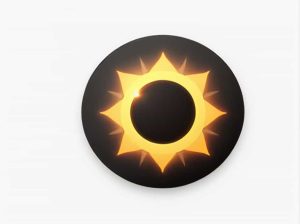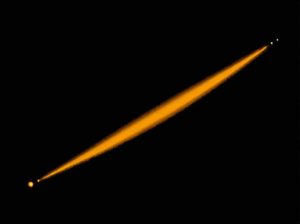Procyon B is a white dwarf star that is part of the Procyon star system, one of the closest star systems to Earth. While its companion, Procyon A, is a bright main-sequence star, Procyon B is much fainter and harder to see. Despite its small size, it remains an important object of study in stellar evolution and astrophysics.
In this topic, we will explore the luminosity of Procyon B, how it compares to other stars, and why it is significant in the study of white dwarfs.
Overview of the Procyon System
The Procyon system, located about 11.46 light-years from Earth, consists of two stars:
- Procyon A – A main-sequence F-type star that is bright and visible to the naked eye.
- Procyon B – A white dwarf, the remnant of a once massive star that has exhausted its nuclear fuel.
The system is part of the Canis Minor constellation and is one of the brightest stars in the night sky.
Understanding Luminosity in Astronomy
Before discussing the luminosity of Procyon B, it’s important to understand what luminosity means in astronomy.
What Is Luminosity?
Luminosity is the total amount of energy a star emits per second. It is usually measured in comparison to the Sun’s luminosity (L☉), where:
- The Sun’s luminosity = 1 L☉
- Bright stars like Sirius A have luminosities of several times the Sun’s
- White dwarfs like Procyon B have very low luminosity
Factors Affecting Luminosity
A star’s luminosity depends on:
- Temperature – Hotter stars are usually more luminous.
- Size – Larger stars emit more light.
- Stage of Evolution – Young stars shine brightly, while old stars (like white dwarfs) are dim.
How Bright Is Procyon B?
Procyon B is a very faint star, especially when compared to its companion, Procyon A.
Luminosity of Procyon B
- The luminosity of Procyon B is about 0.00049 L☉ (or 0.0005 times the Sun’s brightness).
- This makes it nearly 2,000 times dimmer than Procyon A.
- It has a magnitude of 10.82, meaning it is not visible to the naked eye.
Despite its low luminosity, Procyon B is still one of the brightest white dwarfs known, mainly because it is relatively close to Earth.
Why Is Procyon B So Dim?
The low luminosity of Procyon B is due to:
- Its Small Size – Procyon B is about the size of Earth but has the mass of the Sun, making it extremely dense.
- Lack of Nuclear Fusion – Unlike main-sequence stars, white dwarfs no longer undergo fusion, so they emit only the leftover heat from their past life.
- Cooling Over Time – As white dwarfs age, they gradually cool down and become even dimmer.
Comparing Procyon B to Other Stars
To understand how faint Procyon B is, let’s compare it to a few well-known stars:
| Star | Type | Luminosity (L☉) |
|---|---|---|
| Sun | G-type main sequence | 1 L☉ |
| Sirius A | A-type main sequence | 25.4 L☉ |
| Procyon A | F-type main sequence | 6.9 L☉ |
| Procyon B | White dwarf | 0.00049 L☉ |
| Sirius B | White dwarf | 0.001 L☉ |
From this table, we can see that Procyon B is much dimmer than most stars, including other white dwarfs like Sirius B.
The Evolution of Procyon B
Procyon B was not always a white dwarf. It was once a main-sequence star that evolved over billions of years.
Stages of Evolution
-
Main Sequence Phase
- Procyon B started as a massive star (about 2.5 times the Sun’s mass).
- It burned hydrogen into helium for millions of years.
-
Red Giant Phase
- Once hydrogen was exhausted, Procyon B expanded into a red giant.
- It became much larger and more luminous than it is today.
-
White Dwarf Formation
- After shedding its outer layers, the core collapsed into a white dwarf.
- The leftover heat is what gives Procyon B its faint glow today.
Why Is Procyon B Important?
Although Procyon B is faint, it is an important scientific object because:
- It provides insight into stellar evolution – It helps astronomers understand how stars die and become white dwarfs.
- It allows mass measurements – Since Procyon A and B orbit each other, astronomers can precisely calculate their masses.
- It helps refine white dwarf models – Studying Procyon B’s temperature and cooling rate improves theories on white dwarf behavior.
Observing Procyon B
Procyon B is challenging to see because it is:
- Very faint
- Close to a much brighter star (Procyon A)
To observe it, astronomers use:
- Large telescopes with adaptive optics
- Infrared imaging to separate it from Procyon A’s glare
Procyon B is a white dwarf with a luminosity of only 0.00049 times the Sun’s brightness. Despite being faint, it is an important object for studying stellar evolution and white dwarf physics. Over time, Procyon B will continue to cool and fade, eventually becoming a cold, dark remnant in the cosmos.
Understanding Procyon B helps astronomers learn how stars end their life cycles and what happens to them over billions of years.



